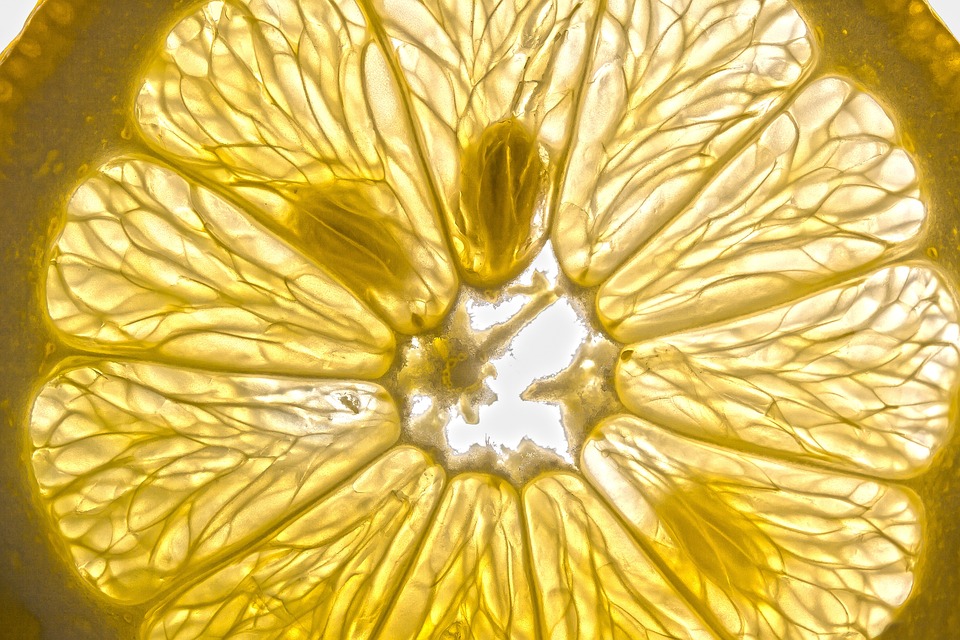the Impact of gastric sleeve Surgery on Loose Skin: Causes, Prevention, and Treatment
Gastric sleeve surgery, also known as sleeve gastrectomy, is a popular weight loss procedure that involves removing a large portion of the stomach to create a smaller, banana-shaped stomach pouch. This restrictive surgery helps individuals achieve significant weight loss by reducing their food intake and promoting feelings of fullness. However, one common concern for individuals considering or undergoing gastric sleeve surgery is the potential for loose skin after significant weight loss. In this article, we will delve into the causes of loose skin post-surgery, explore preventive measures, and discuss various treatment options available.
Understanding Loose Skin: Why Does It Occur?
Loose skin is a natural consequence of rapid weight loss, and gastric sleeve surgery often leads to significant and relatively rapid weight loss. When excess body fat is lost, the skin does not always have enough elasticity to conform to the reduced body size, resulting in loose, sagging skin. The amount of loose skin can vary from person to person, depending on factors such as age, genetics, the amount of weight lost, and the overall condition of the skin prior to surgery.
Preventing Loose Skin: What Can You Do?
While loose skin cannot always be completely avoided after gastric sleeve surgery, there are steps you can take to minimize its occurrence and severity:
1. Gradual Weight Loss:
Opting for a slower weight loss journey can help the skin adapt gradually to the changes in body size. Losing weight at a rate of 1-2 pounds per week is generally considered a healthy and reasonable pace.
2. Building Muscle:
Engaging in regular strength training exercises can help you build muscle mass, which can fill in some of the space left by reduced fat tissue. This can help improve the overall appearance of your skin and reduce the appearance of loose skin.
3. Hydrating and Nourishing Your Skin:
Keeping your skin hydrated and well-nourished can promote its elasticity and overall health. Drinking an adequate amount of water daily and using moisturizers can help maintain the elasticity of your skin.
4. Incorporating Collagen-Rich Foods:
Collagen is a protein that provides structure and strength to the skin. Including collagen-rich foods like bone broth, fish, and leafy greens in your diet may help promote skin elasticity.
Treating Loose Skin: Available Options
If loose skin becomes a concern after gastric sleeve surgery, there are several treatment options available:
1. Exercise and Strength Training:
Engaging in regular exercise, including strength training, can help tone and tighten the muscles beneath the skin, potentially improving its appearance. However, it is essential to consult with a healthcare professional or a qualified trainer before starting any exercise program.
2. Skin-Tightening Creams and Lotions:
Various over-the-counter skin-tightening creams and lotions claim to improve the elasticity and firmness of the skin. While these products may provide temporary tightening effects, their long-term efficacy is debatable.
3. Non-Invasive Procedures:
Non-invasive procedures such as radiofrequency, ultrasound, and laser therapies can stimulate collagen production and promote skin tightening. These procedures are generally safe and require minimal downtime, making them attractive options for individuals seeking non-surgical interventions.
4. Surgical Interventions:
If loose skin is severe or significantly impacts your quality of life, surgical interventions may be considered. Procedures such as body contouring or abdominoplasty (tummy tuck) can remove excess skin and reshape your body contours. However, it is crucial to consult with a qualified plastic surgeon to assess your candidacy and discuss potential risks and benefits.
conclusion
Gastric sleeve surgery can be a life-changing procedure for individuals struggling with obesity. While loose skin is a potential side effect, it should not overshadow the many benefits of weight loss. By taking preventive measures and exploring the available treatment options, individuals can address loose skin and enhance their overall body satisfaction and self-confidence. Remember, each individual’s experience with loose skin may differ, and it is vital to consult with healthcare professionals for personalized advice and guidance.
Most Asked Questions Regarding Gastric Sleeve Loose Skin
What is Gastric Sleeve Loose Skin?
Gastric Sleeve Loose Skin refers to the excess skin that may occur after undergoing a gastric sleeve surgery, also known as sleeve gastrectomy. This procedure involves removing a portion of the stomach, resulting in weight loss. However, rapid weight loss can often lead to loose and sagging skin, which can be bothersome for some individuals.
Three most important information:
1. Gastric sleeve loose skin is a common concern for individuals who have undergone gastric sleeve surgery.
2. Loose skin occurs due to rapid weight loss after the surgery.
3. The excess skin can affect both the appearance and physical comfort of the individual.
What are the Causes of Gastric Sleeve Loose Skin?
Several factors contribute to the development of gastric sleeve loose skin. The primary cause is the rapid and significant weight loss that occurs after the surgery. When the body loses weight quickly, the skin does not have enough time to adapt and tighten, resulting in loose and sagging skin. Additionally, factors such as age, genetics, and the amount of weight lost can also influence the extent of loose skin.
Three most important information:
1. Rapid weight loss is the primary cause of gastric sleeve loose skin.
2. Age, genetics, and the amount of weight lost can also impact the severity of loose skin.
3. The skin may not have enough time to adapt and tighten during rapid weight loss.
Can Gastric Sleeve Loose Skin be Prevented?
While it is difficult to completely prevent gastric sleeve loose skin, there are certain measures that can be taken to minimize its occurrence. One of the most effective methods is to lose weight gradually and maintain a healthy lifestyle. This allows the skin to adjust gradually to the changes, reducing the likelihood of significant loose skin. Additionally, staying hydrated, exercising regularly, and incorporating strength training exercises can help improve skin elasticity.
Three most important information:
1. Gradual weight loss and maintaining a healthy lifestyle can minimize the occurrence of gastric sleeve loose skin.
2. Staying hydrated and exercising regularly can improve skin elasticity.
3. Strength training exercises can help tone the body and improve the appearance of loose skin.
What are the Treatment Options for Gastric Sleeve Loose Skin?
There are various treatment options available to address gastric sleeve loose skin, depending on the severity and individual preferences. These options include:
1. Non-surgical treatments: Non-invasive procedures such as radiofrequency skin tightening, laser therapy, and ultrasound therapy can help tighten and tone loose skin.
2. Surgical interventions: For more severe cases, surgical procedures such as body contouring or abdominoplasty (tummy tuck) may be considered. These surgeries help remove excess skin and reshape the body.
3. Skincare routines: Implementing a proper skincare routine can also help improve the appearance of loose skin by keeping it hydrated and nourished.
Three most important information:
1. Non-surgical treatments like radiofrequency skin tightening and laser therapy can help tighten loose skin.
2. Surgical interventions like body contouring or abdominoplasty may be necessary for severe cases of loose skin.
3. Implementing a proper skincare routine can improve the appearance of loose skin.
What are the Risks and Complications of Gastric Sleeve Loose Skin Treatment?
Like any medical procedure, treatments for gastric sleeve loose skin come with certain risks and complications. Some potential risks include infection, scarring, bleeding, and adverse reactions to anesthesia. It is important to consult with a qualified healthcare professional to assess the individual’s suitability for any treatment option and to discuss potential risks and complications.
Three most important information:
1. Treatment options for gastric sleeve loose skin carry risks such as infection, scarring, bleeding, and adverse reactions to anesthesia.
2. Consultation with a qualified healthcare professional is essential to assess the suitability of treatment options.
3. Individualized risk assessment and discussion of potential complications are important before undergoing any treatment.
Introduction
Gastric sleeve surgery, also known as sleeve gastrectomy, is a popular weight loss procedure that involves removing a portion of the stomach to create a smaller, sleeve-shaped stomach. While this surgery has proven to be effective in helping individuals achieve significant weight loss, there are some misconceptions surrounding the issue of loose skin after the procedure. In this article, we will debunk some common misconceptions about gastric sleeve loose skin.
Misconception 1: Gastric sleeve surgery always leads to loose skin
One common misconception about gastric sleeve surgery is that it always results in loose skin. While it is true that significant weight loss can cause loose skin, not everyone who undergoes gastric sleeve surgery will experience this issue. Factors such as age, genetics, and the amount of weight lost can influence the likelihood of loose skin development. It is important to note that the amount of skin elasticity varies from person to person, and some individuals may have more resilient skin that can adapt to the new body shape without excessive sagging.
Misconception 2: Loose skin is unavoidable after gastric sleeve surgery
Contrary to popular belief, loose skin is not inevitable after gastric sleeve surgery. Many individuals who undergo this procedure may not experience loose skin to a significant extent. The body has a remarkable ability to adjust and tighten the skin after weight loss, especially if the weight loss is gradual and sustainable. Additionally, following a healthy lifestyle that includes regular exercise and proper hydration can help improve skin elasticity and minimize loose skin.
Misconception 3: The amount of loose skin depends solely on the amount of weight lost
Another misconception is that the amount of loose skin after gastric sleeve surgery is solely determined by the amount of weight lost. While weight loss is a contributing factor, other elements come into play when considering loose skin. Factors such as age, genetics, skin elasticity, and the speed at which weight loss occurs can all impact the likelihood and severity of loose skin. Older individuals with reduced skin elasticity may be more prone to loose skin, regardless of the amount of weight lost.
Misconception 4: Loose skin cannot be addressed or improved
There is a common misconception that loose skin cannot be addressed or improved after gastric sleeve surgery. However, there are several options available to help minimize the appearance of loose skin. One option is strength training and muscle building exercises, which can help fill out loose skin and provide a more toned appearance. Additionally, certain skincare products, such as those containing collagen or hyaluronic acid, may help improve skin elasticity and reduce the appearance of loose skin. In some cases, individuals may opt for surgical procedures, such as a body lift or abdominoplasty, to remove excess skin.
Misconception 5: Loose skin is solely a cosmetic concern
While loose skin after gastric sleeve surgery can be a cosmetic concern, it can also have practical implications. Excess skin folds may cause discomfort, chafing, and skin infections. They can also affect mobility and make it difficult to engage in physical activities. It is essential to address loose skin not only for aesthetic reasons but also for the individual’s overall well-being and quality of life. Seeking advice from medical professionals and exploring available options can help individuals address these concerns effectively.
In conclusion, there are several misconceptions surrounding gastric sleeve loose skin. It is important to understand that loose skin is not inevitable after gastric sleeve surgery, and its development depends on various factors such as age, genetics, and skin elasticity. It is crucial to approach the issue of loose skin with accurate information and to consult with medical professionals to explore the available options for addressing and improving loose skin after gastric sleeve surgery.
Gastric Sleeve Loose Skin
#Gastric #sleeve #surgery #sleeve #gastrectomy #weight #loss #surgery #involves #removing #portion #stomach #create #smaller #sleeveshaped #stomach #effective #lose #weight #improve #health #potential #side #effect #loose #skin

